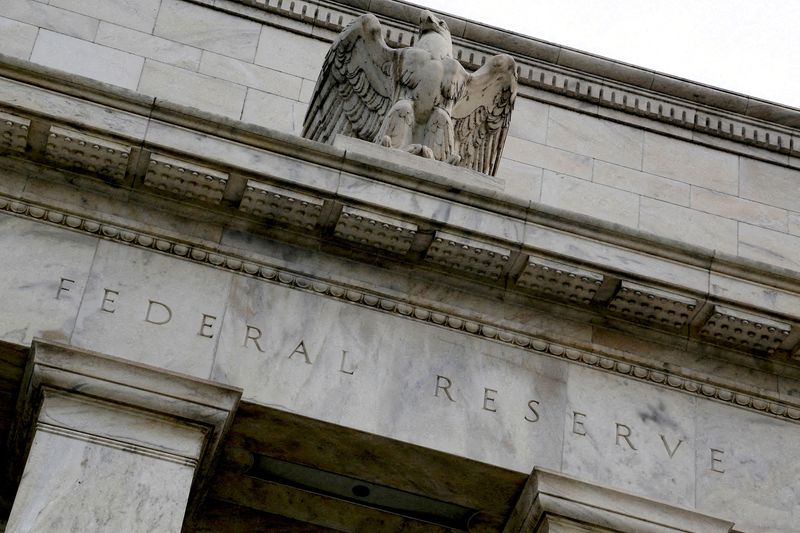By Michael S. Derby
NEW YORK (Reuters) -The New York Federal Reserve said eligible firms on Monday parked the largest amount of cash in its reverse repo facility since late June, in a move almost certainly tied to the end of the third quarter.
The regional Fed bank said $465.6 billion was placed in its reverse repo facility, the highest level of inflows since the end of the last quarter, when on June 28 reverse repo usage stood at $664.6 billion.
Quarter-end dates generally see surging inflows that quickly abate, and that's what analysts and market participants expect to see happen this time.
The Fed's reverse repo facility takes in cash mainly from money market funds, with the interest rate offered on the facility setting a soft floor underneath all short-term rates. The reverse repo facility has been widely looked to as a proxy for excessive liquidity in the financial system.
The overall level of the reverse repo facility has been falling for some time as the Fed has removed pandemic-era stimulus by allowing Treasury and mortgage securities it owns to expire and not be replaced. That's taken overall Fed holdings down from a peak of around $9 trillion in the summer of 2022 to the current level of about $7.1 trillion.
Most of the Fed's balance sheet reduction so far has taken place on the back of cash leaving the reverse repo facility in search of better private market rates. The reserve repo facility, after seeing effectively zero inflows at the start of 2021, peaked at just over $2.6 trillion at the end of 2022.
Since that summit, the overall trajectory of the facility has been toward uneven contraction. The main question is whether the reverse repo tool will return to negligible usage at some point, as many officials at the Fed expect. Market participants generally believe that for a variety of reasons some firms may have decided to keep some cash with the Fed rather than in the private market.
When the reverse repo facility reaches its nadir, ongoing central bank balance sheet contraction will turn toward draining what has so far been largely a steady level of bank reserves.

The Fed's overall strategy is to withdraw enough liquidity to maintain control over its benchmark overnight interest rate and to allow for normal money market volatility. Officials do not know where that point is, however, even as Fed policymakers believe they still have some distance to go in shedding bond holdings.
On Friday, Roberto Perli, who leads the implementation of monetary policy at the New York Fed, said "I believe there is plenty of room to continue shrinking" Fed holdings amid evidence of still ample liquidity in markets.